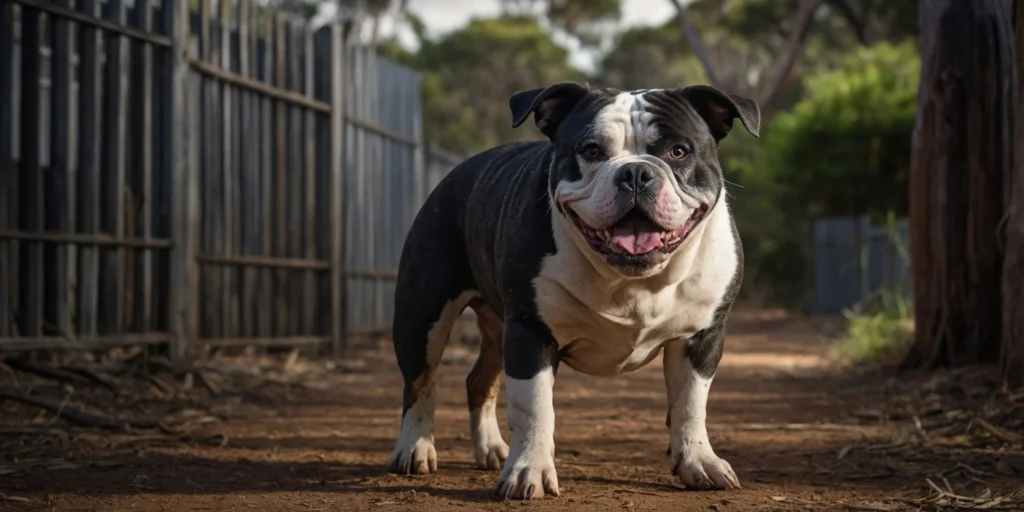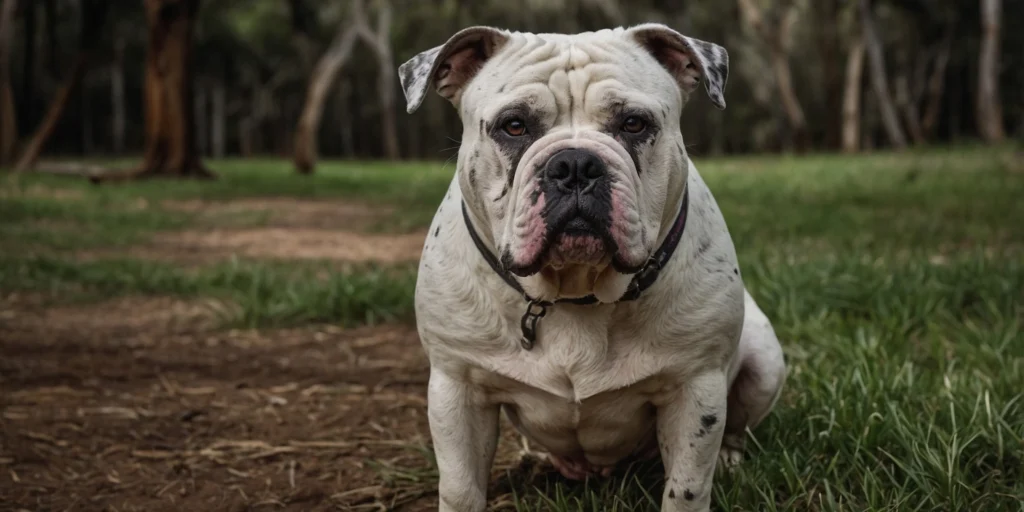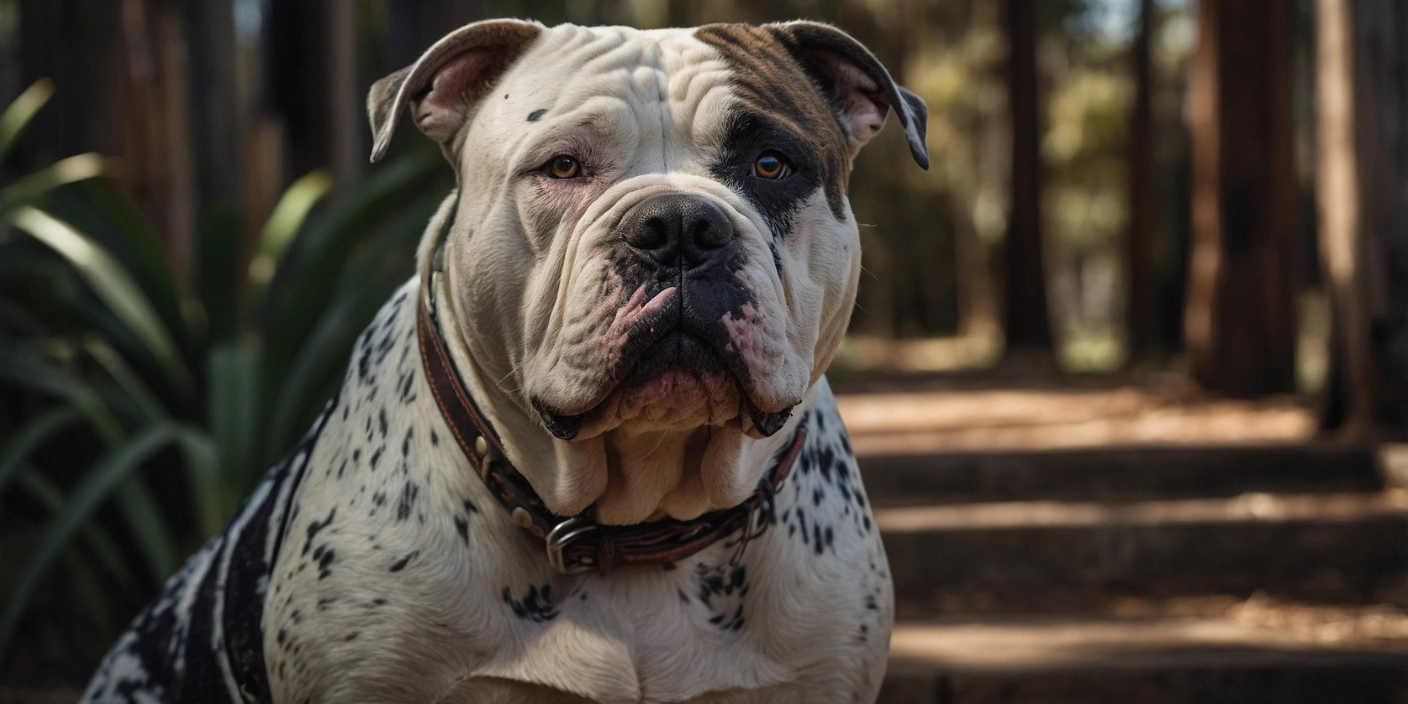The Bully dog in Australia has gained prominence in many households, serving both as a loyal companion and a faithful protector. Their “goofy smile,” which is almost permanent, wins over animal lovers and makes them incredibly endearing.
The Bully Breeds, known for their physical strength and unique appearance, win the hearts of many, especially in a country where outdoor culture is highly valued. However, these dogs also face prejudices and misunderstandings.
Here, we will explore what defines a Bully dog, their main breeds, origins, popularity in Australia, necessary care, and also debunk common myths about these amazing pets.
What defines Bully Breeds?
Bully Breeds are known for their striking physical characteristics, which include:
- Developed and defined muscles;
- Strong bone structure;
- Large and powerful jaws;
- Short fur and various colors.
Although this appearance often conveys a sense of aggression, the truth is that the Bully dog in Australia is generally extremely affectionate, loyal, and great with children.
In addition to their physical strength, the behavior of Bully dogs is another defining feature. They are naturally protective and form deep bonds with their human families.
However, it is important for these dogs to be trained and socialized from an early age to ensure their traits are shaped positively, ensuring they are balanced and obedient.
The history and origin of Bully dogs

The Bully dog in Australia has a long history that dates back centuries. Initially, these breeds were developed in England for blood sports such as bull-baiting, which involved pitting dogs against bulls for entertainment.
The word “bully” originates from this historical context. With the prohibition of these practices in the 19th century, these breeds needed to find a new role. They then began to be used as working dogs, valued for their loyalty, strength, and guarding ability.
Over time, as the Bully Breeds adapted to domestic life, the focus shifted to their companionship qualities. They became family dogs and were introduced to various countries, including Australia, where they found a perfect environment to thrive.
Why are Bully dogs popular in Australia?
In Australia, the active and outdoor lifestyle perfectly aligns with the needs of Bully dogs. Their energy and stamina make them excellent companions for outdoor adventures like hiking, running, and cycling.
Additionally, the protective temperament of Bully dogs in Australia makes them ideal guard dogs, providing security for families. Adaptability is another factor contributing to the popularity of these breeds.
Many Australian homes are spacious and suitable for larger and more energetic dogs. Furthermore, the social nature of these dogs allows them to integrate well into homes with children, other dogs, and even cats, provided they are properly socialized from a young age.
Main Bully Breeds in Australia
The Bully dog in Australia is represented by various breeds, with some standing out for their presence in Australian homes. The main Bully Breeds in Australia include:
American Staffordshire Terrier
Known for its combination of strength and affection, it is one of the most popular Bully Breeds in Australia. These dogs are loyal and great with children, making them excellent family companions.
Staffordshire Bull Terrier
One of the oldest and most beloved Bully Breeds, “Staffies” are small but powerful, with an extremely affectionate nature and patience with children.
American Bully
The American Bully Breed is a muscular breed known for its imposing appearance and compact build. Despite its powerful look, it is a friendly and loyal dog that gets along well with family and is generally good with children.
American Bulldog
This strong and robust breed is known for its loyalty and protective instinct. Although they may seem intimidating, they are extremely devoted and affectionate with their families.
American Pit Bull Terrier
Despite being a controversial breed, many Australians value the balanced temperament and intelligence of pit bulls, provided they are raised and trained correctly. Today, Australia has laws regulating the adoption of these animals, encouraging responsible ownership.
Daily care for Bully dogs
Daily care for a Bully dog in Australia involves more than just physical exercise. These breeds require a balanced diet that supports their muscle development and joint health, especially as they are prone to issues like hip dysplasia.
Additionally, hygiene is important, as Bully dogs have short coats, which require regular brushing to remove dead hair and keep their skin healthy. Veterinary care is also essential, just like for other breeds.
Regular check-ups help prevent health problems, and vaccinations and deworming are crucial to ensure the dog remains healthy. An important aspect is nail care, which should be trimmed regularly to avoid discomfort during walks and runs.
Training and socialization of Bully dogs
To ensure that the Bully dog in Australia is a balanced and obedient companion, training and socialization should start early. These breeds have a strong nature and can develop undesirable behaviors if not properly guided.
Positive training, which uses rewards such as treats and praise, is the best approach. This helps the dog associate positive behaviors with rewarding outcomes, which also strengthens the bond between the pet and its owner.
Socialization is equally important. From a young age, the dog should be exposed to different environments, people, and other animals. This ensures they learn to interact appropriately with the world around them, avoiding aggressive or fearful behaviors.
Myths and facts about Bully dogs

Many myths surround the Bully dog in Australia, which unfortunately affects the adoption of these breeds when they are available in shelters. Some of the main myths affecting these pets include:
Aggressiveness
One of the most common misconceptions is that all Bully dogs are dangerous and cannot be trusted. However, this is far from the truth. With proper training and socialization, these dogs can be as affectionate and trustworthy as any other breed.
Unsuitable for Families with Children
Another myth is that Bully Breeds are not suitable for families with children. In reality, many of these breeds, like the Staffordshire Bull Terrier, are known for their patience and affection with children. Like any dog, the key to a good relationship is supervision and raising them in a positive and structured environment.
Adopting Bully dogs in Australia
Adopting a Bully dog in Australia is a great way to give an animal a second chance. Often, these dogs end up in shelters due to reasons unrelated to their behavior, such as changes in their previous owners’ circumstances.
Organizations like the RSPCA provide support for adoption and help new owners understand the specific needs of Bully dogs. There are also other organizations of Staffy and Bully Breed Rescue, which are then made available for responsible adoption.
Adopting a Bully dog is not only a way to offer a home to a dog in need but also ensures that more dogs find loving homes. Many adopted Bully dogs become loyal and loving companions to their new families.
Bully dog in Australia: Conclusion
Bully dogs stand out not only for their unique appearance but also for their loyalty and intelligence. Their popularity in the country grows daily, thanks to their qualities as trustworthy companions and protectors.
However, it is essential to understand the specific needs of these breeds to ensure the well-being of the animal. When adopting a Bully dog in Australia, owners should be prepared to provide proper care, including daily exercise, socialization, and training.
Success with a Bully dog depends on commitment to these responsibilities. While they may be seen as intimidating, these breeds are, in fact, affectionate and dedicated animals.In summary, adopting a Bully dog in Australia can be a rewarding experience for those seeking a loyal and energetic pet. With the right care and love, they can become true family members, bringing joy and security to the home.

